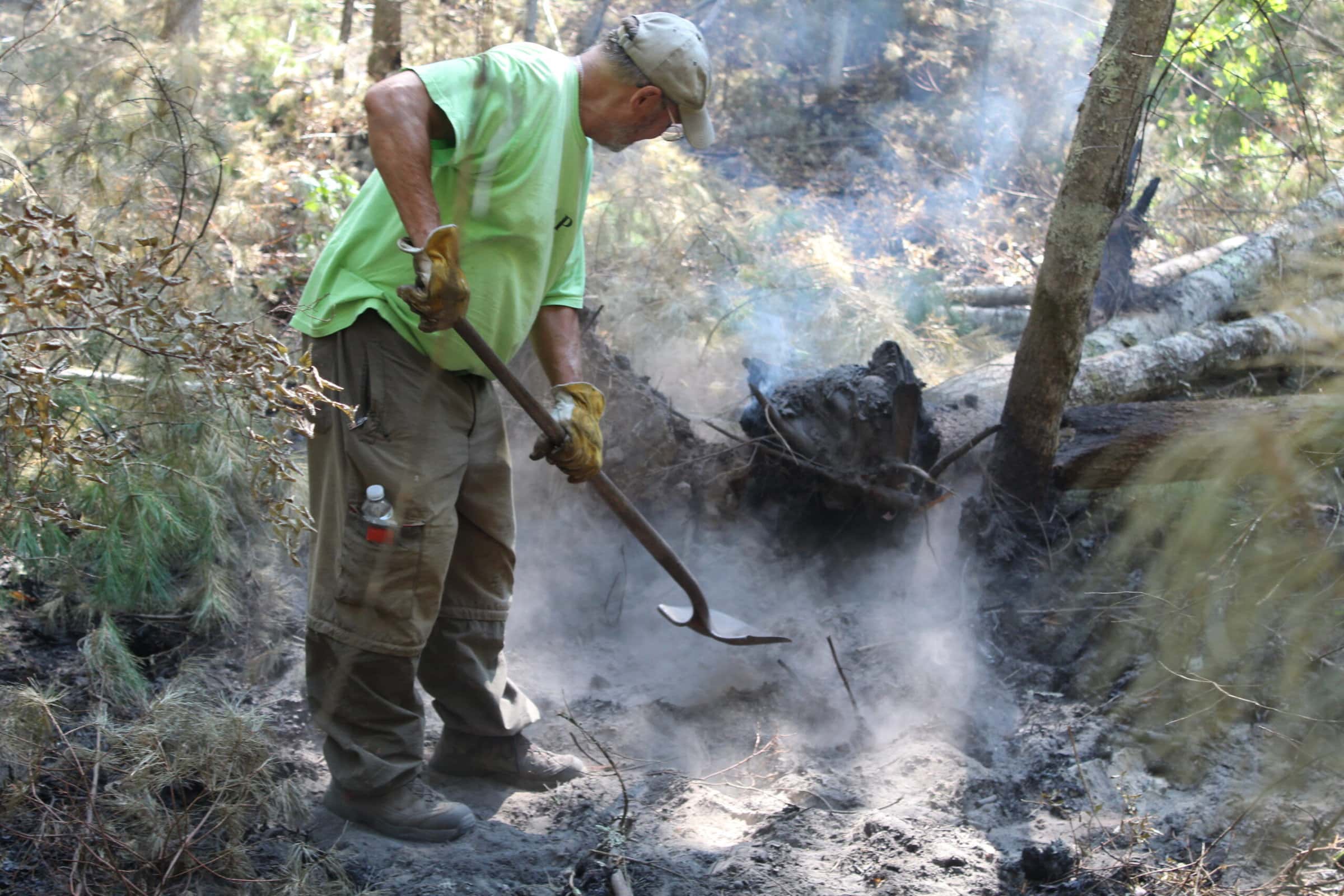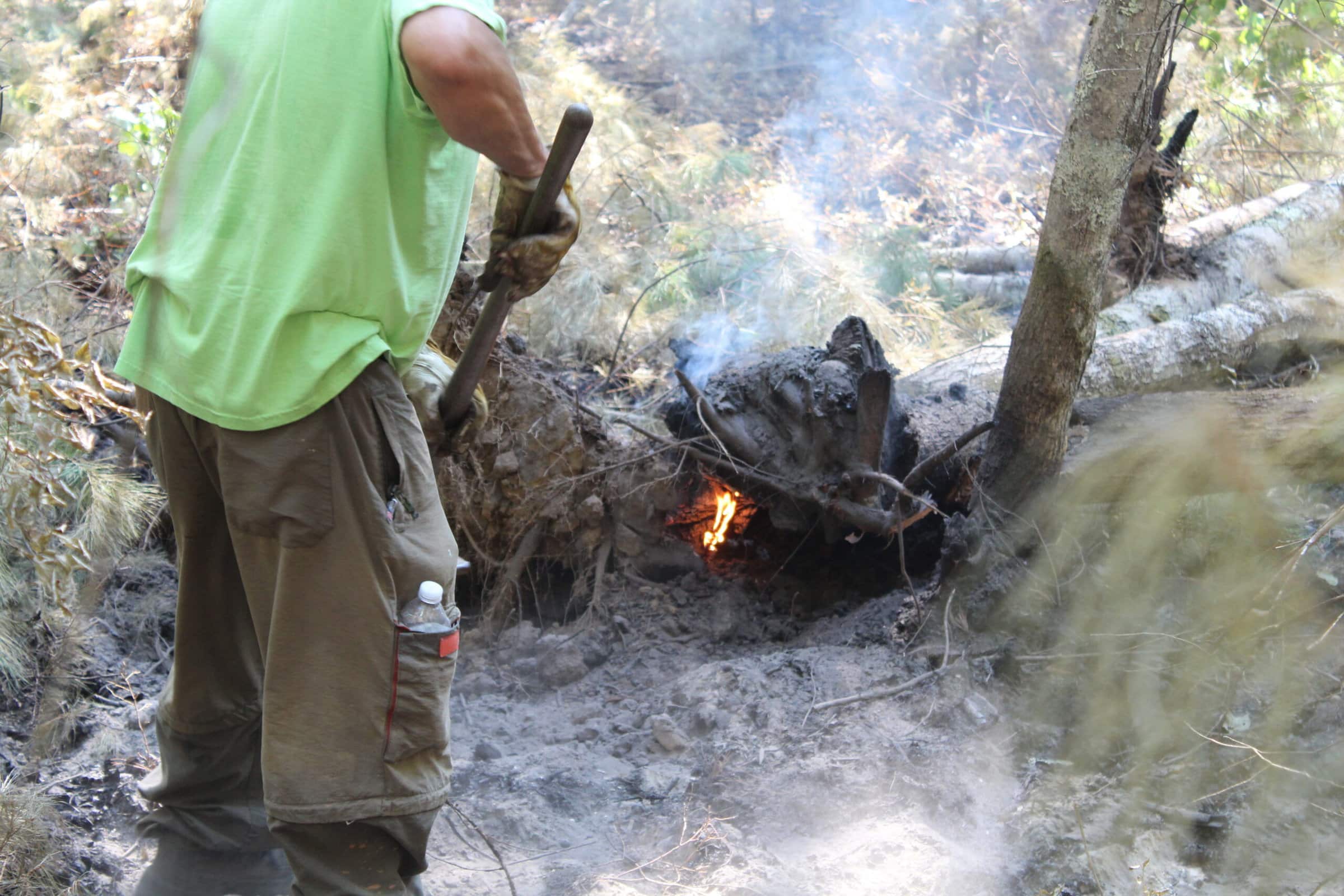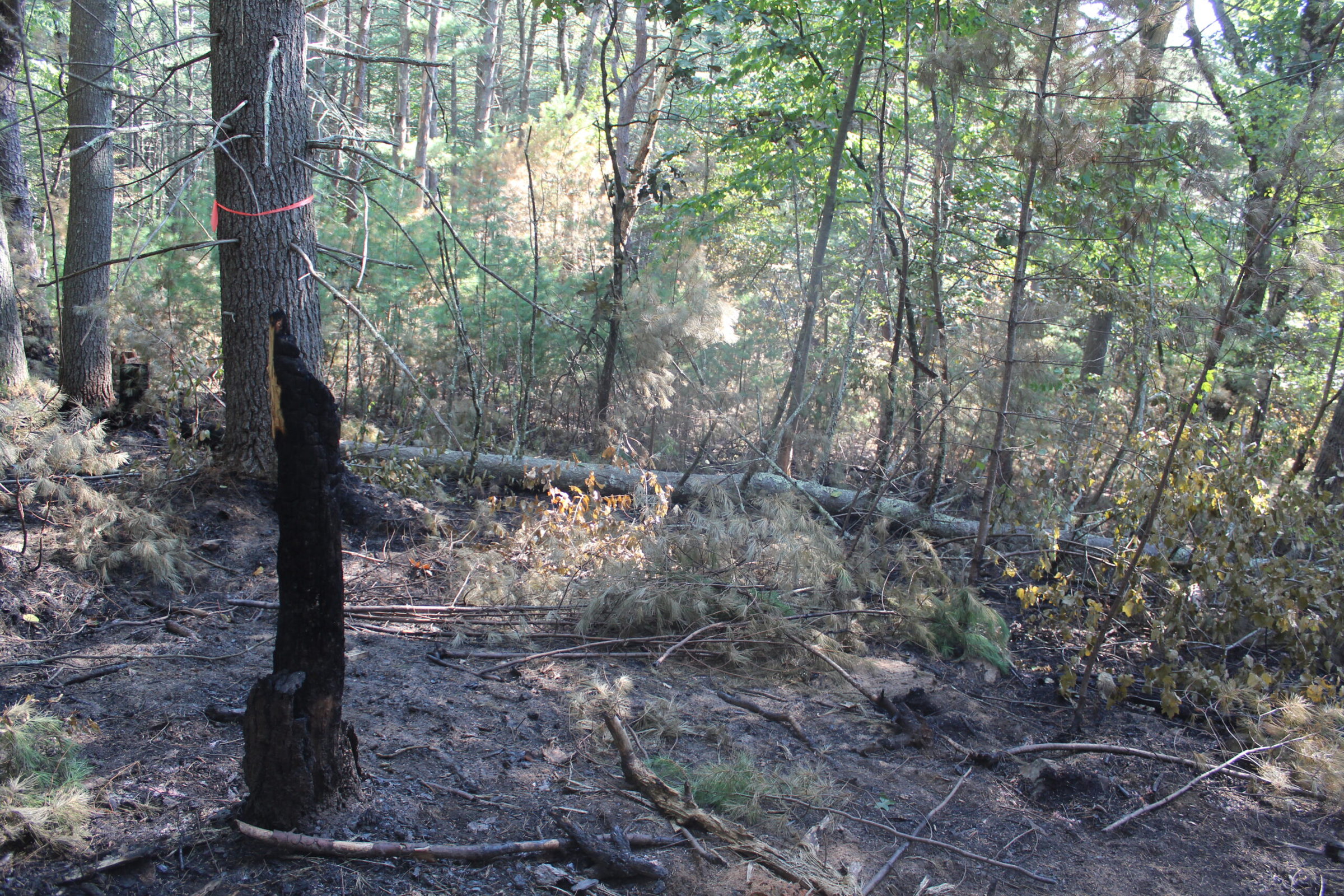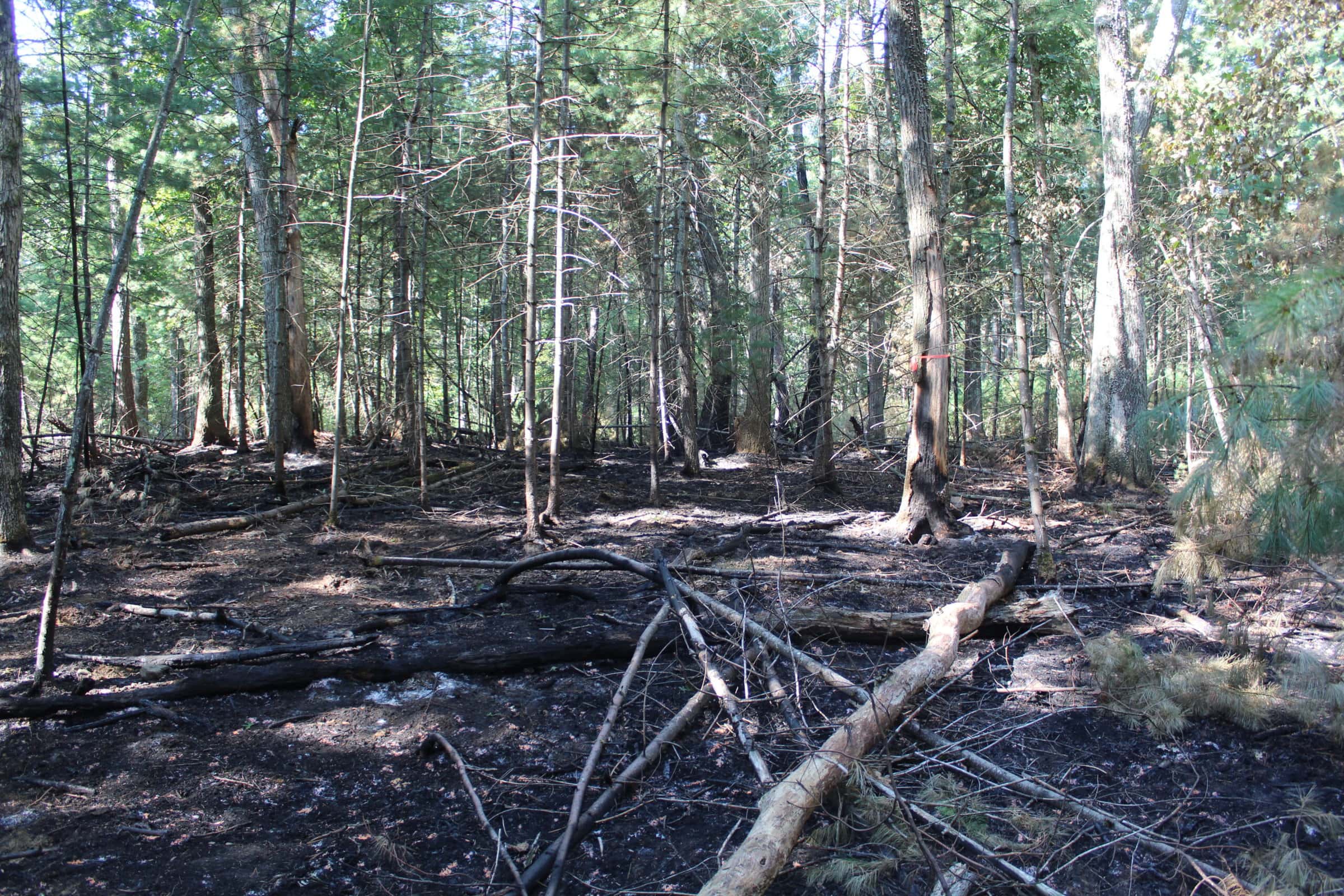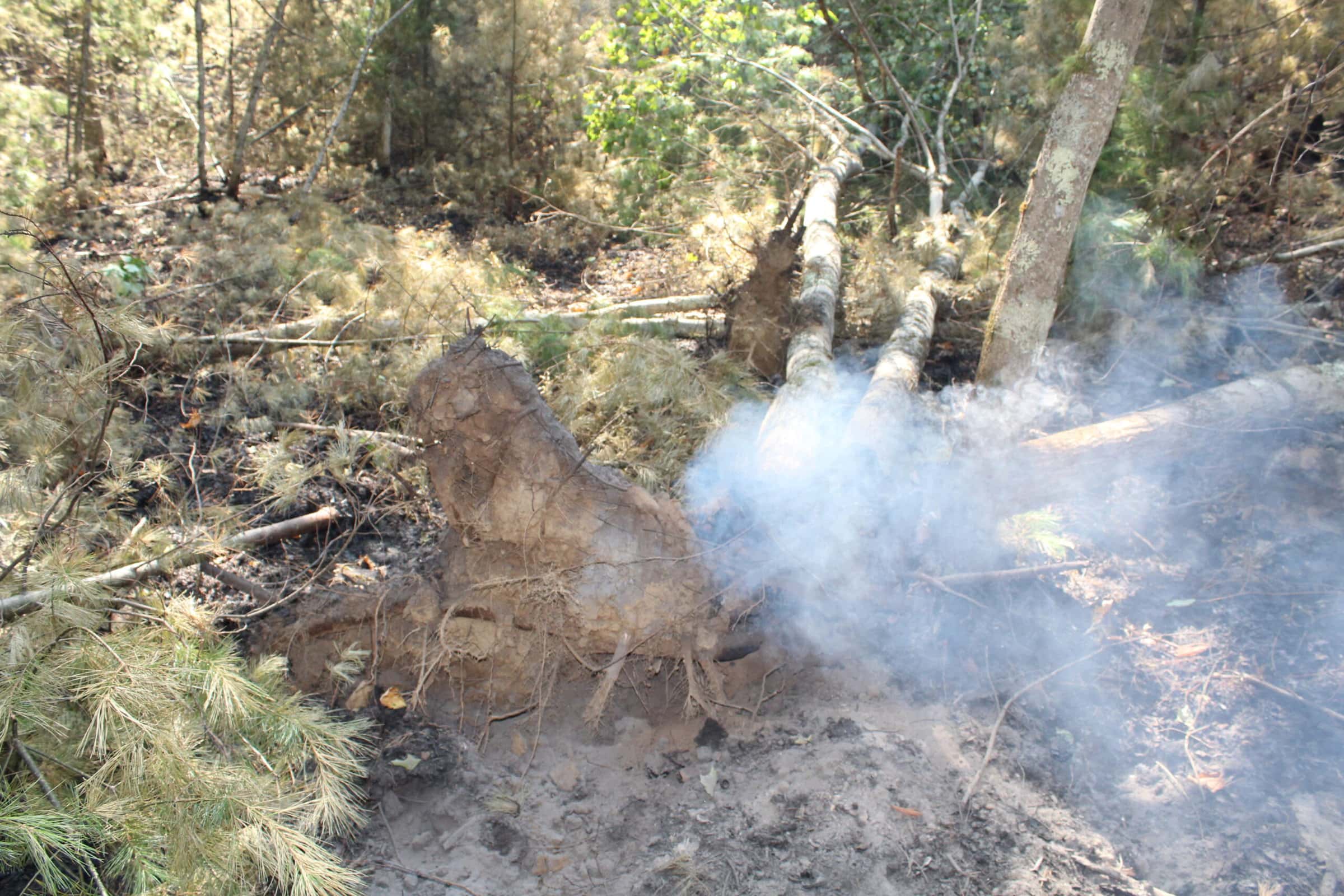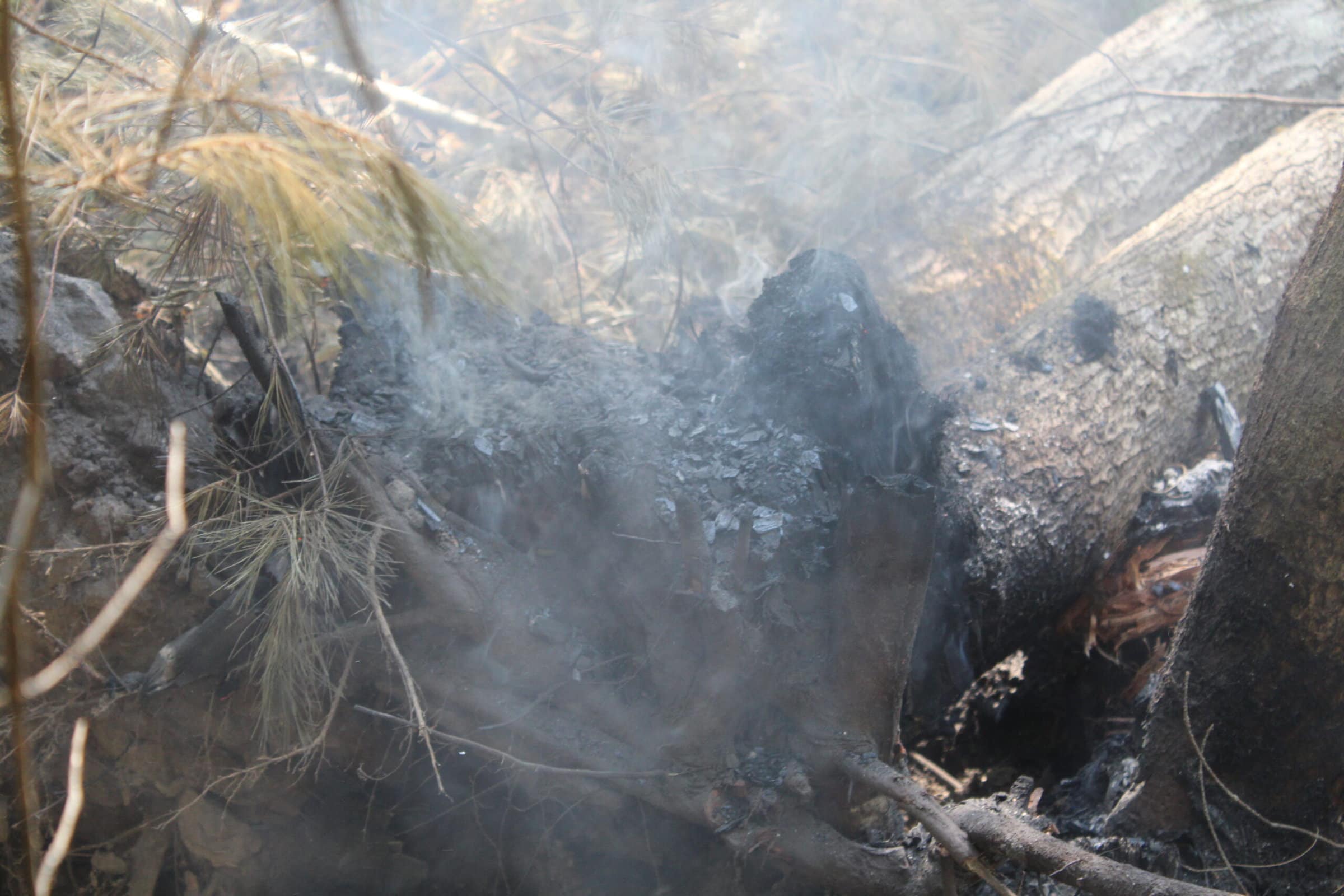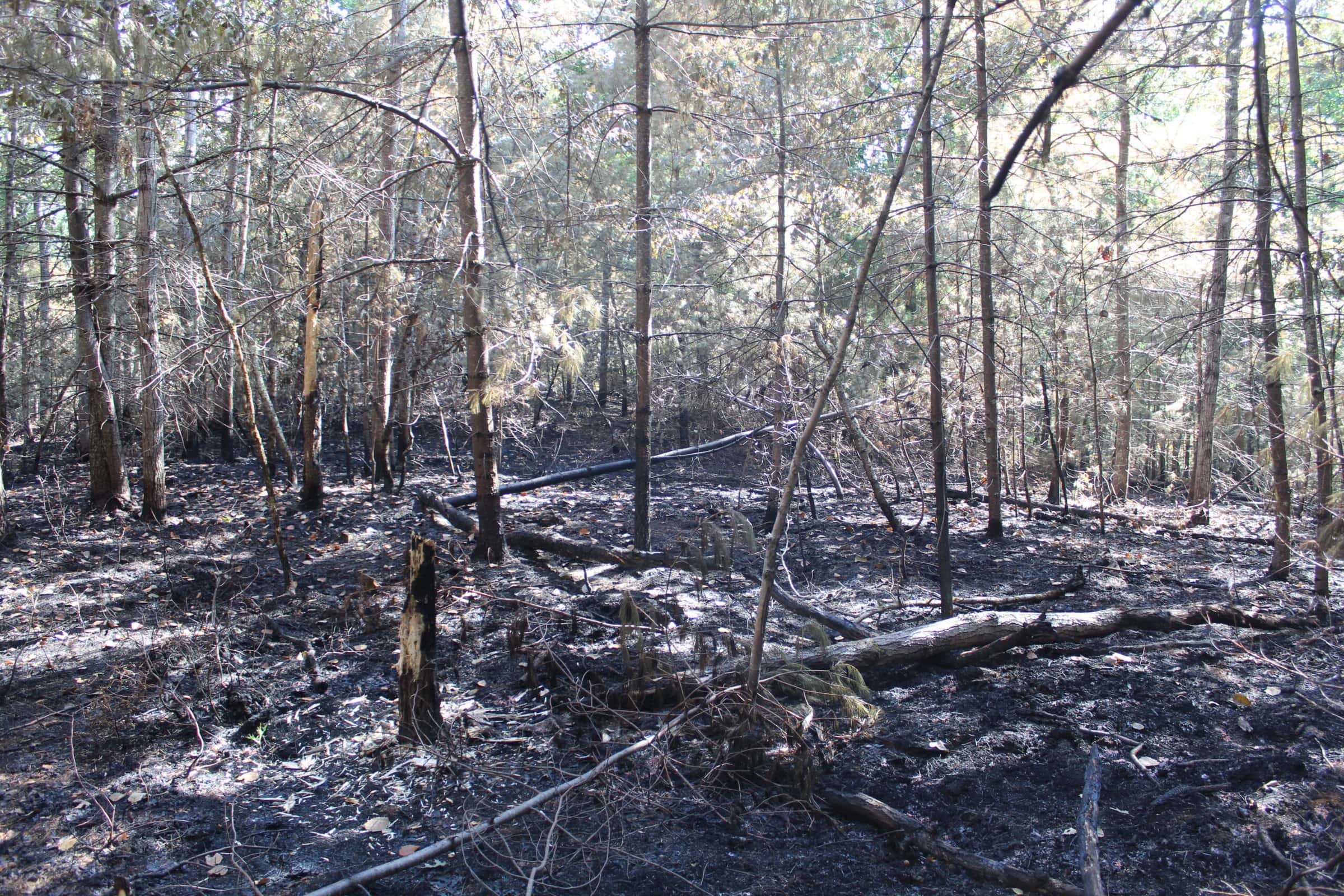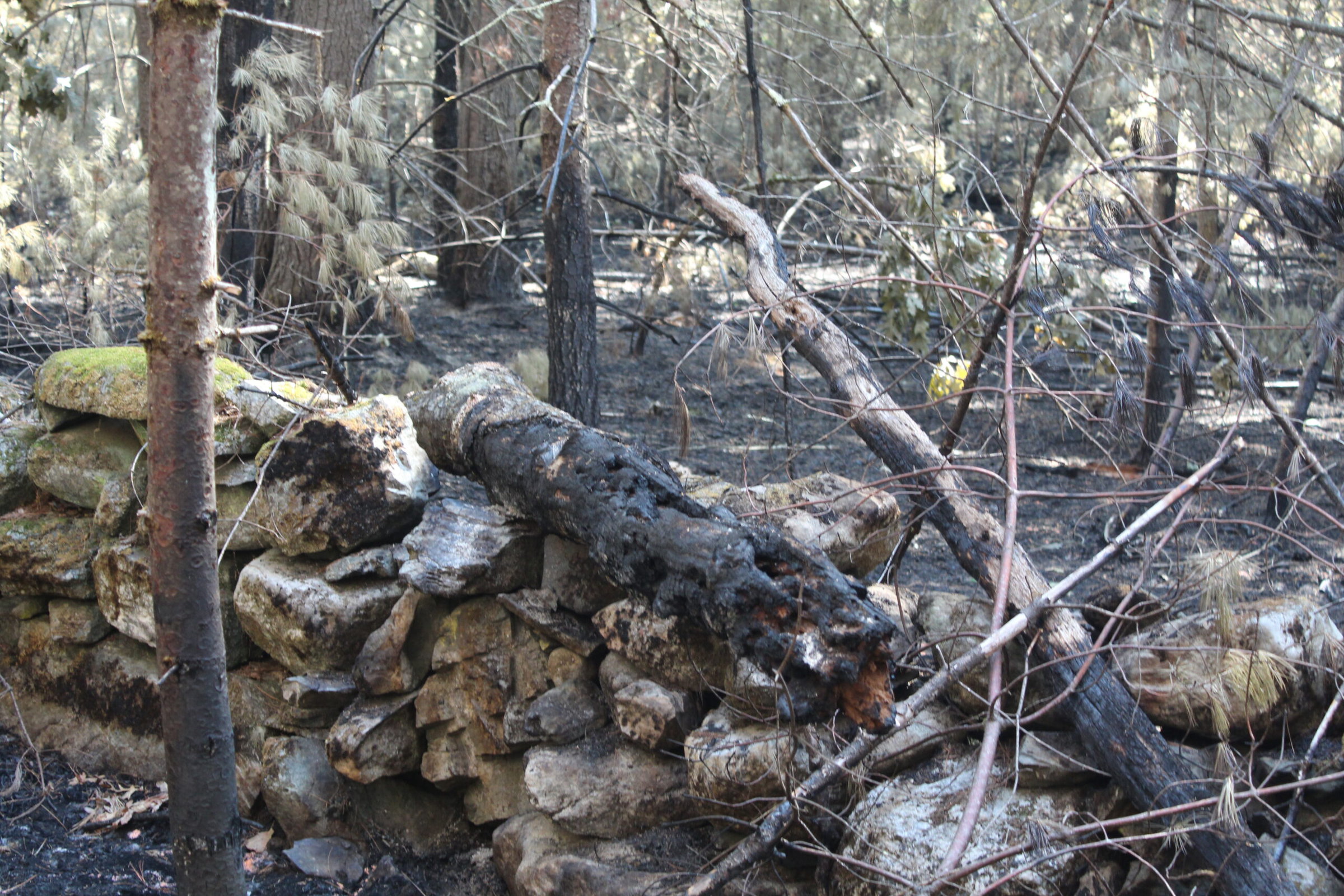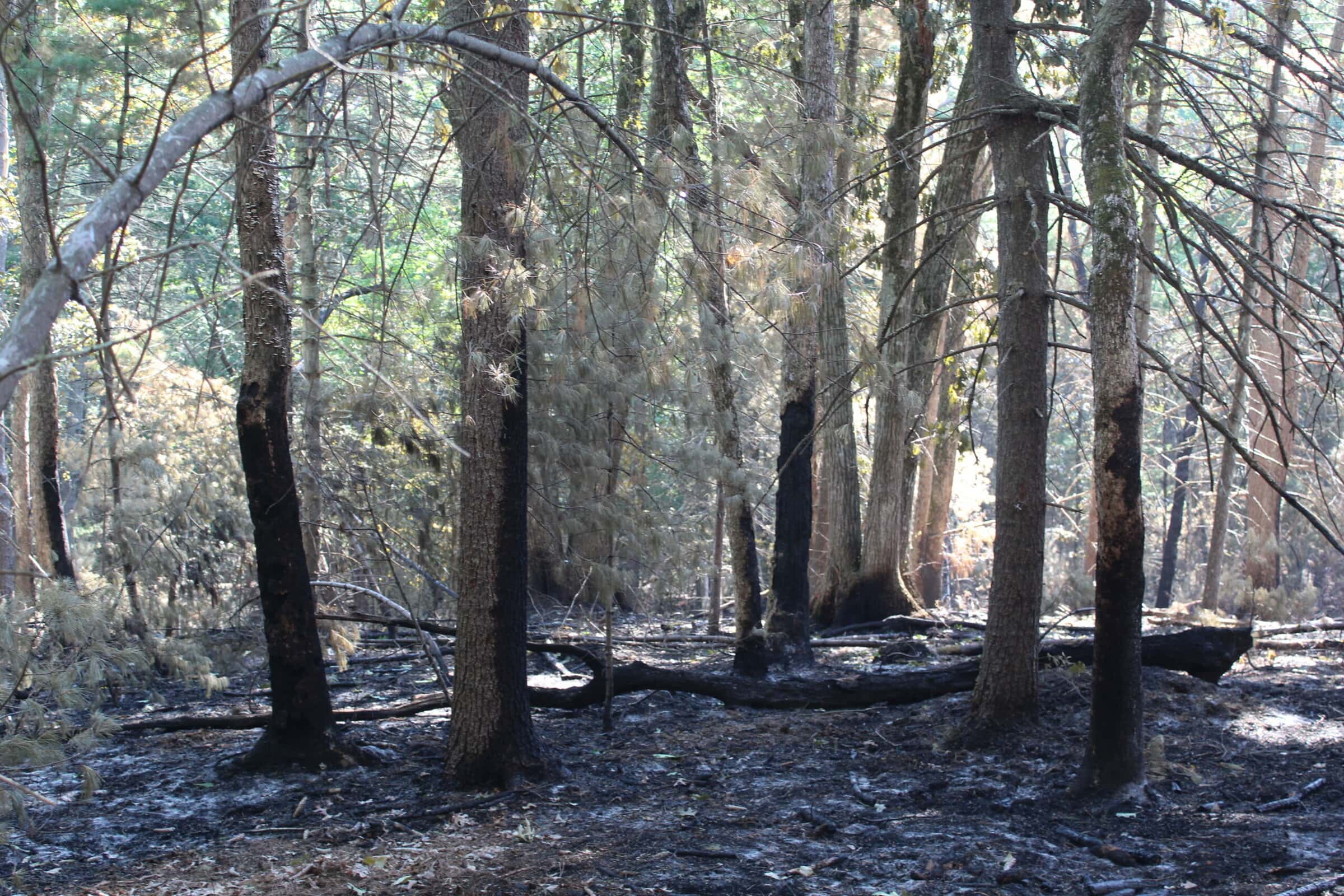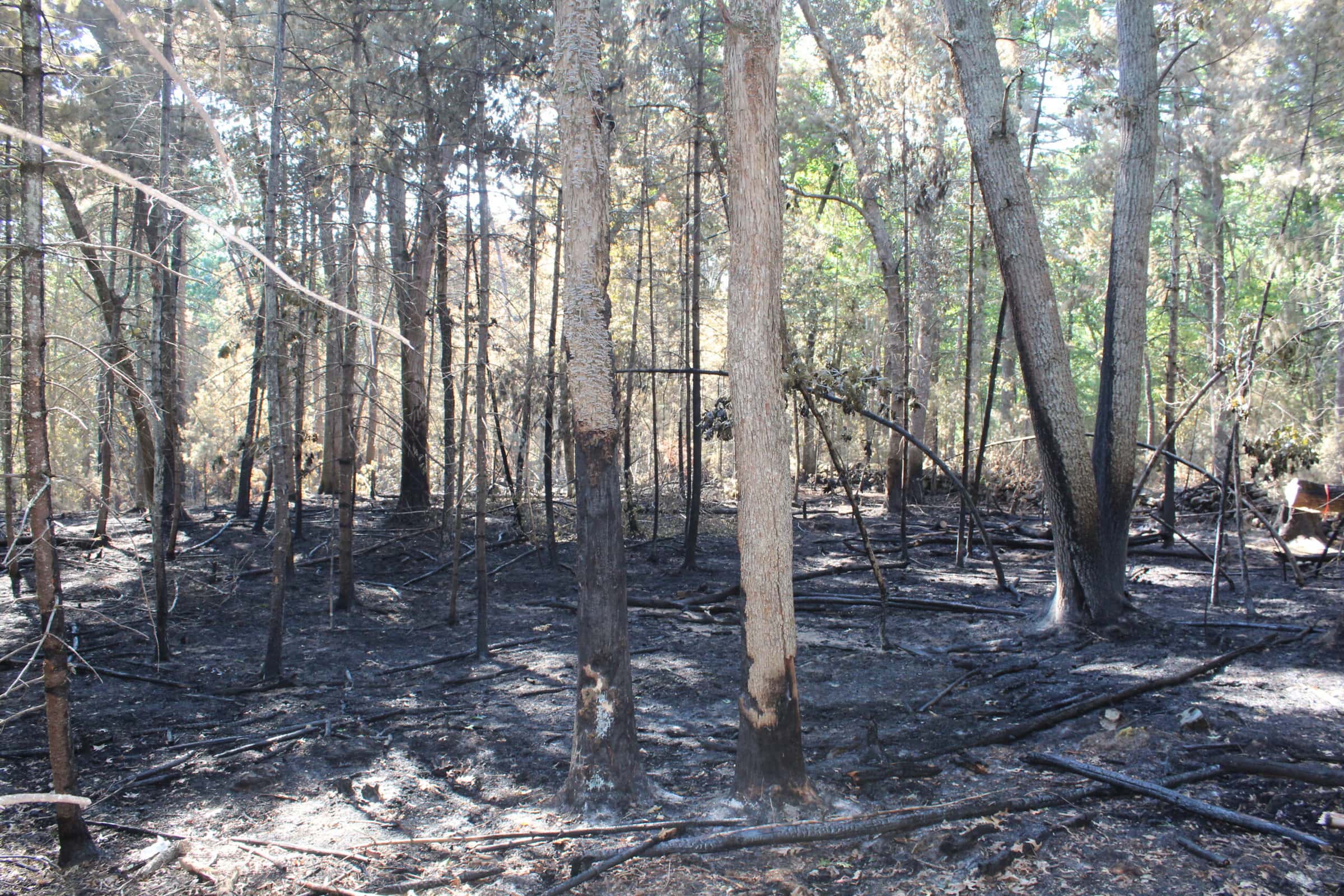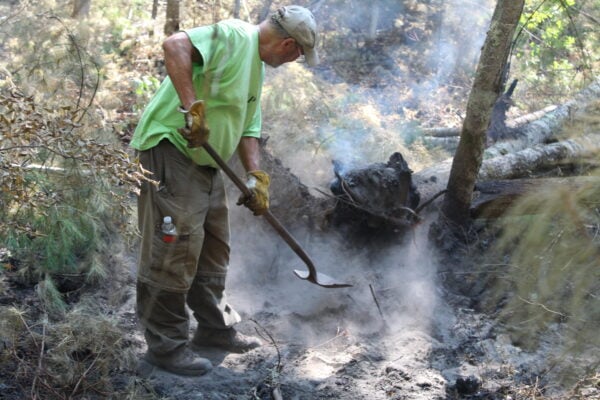
MARLBOROUGH – Heading off the trail that goes through the Desert Conservation Area, the smell of smoke is faint at first.
It is the first remnant of the 25-acre brush fire that burned deep in the area last week.
Moving deeper into the woods the smell becomes unmistakable. Emerging into the site of the fire, the woods are much less dense. The felled trees on the ground are black and charred. The ground itself is covered with a sheet of ash, which plumes into clouds when stepped on.
Even a week after the fire, it is still traveling underground and flaring up when it hits pockets of oxygen.
“This is what happens with wildfires, you have to monitor them for a while just to see that everything is out,” said Marlborough Conservation Officer Priscilla Ryder.
Ryder and four others came out to the site of the fire to examine the damage from the fire. They carried shovels to put out small flare-ups.
In the distance, a large oak tree fell over. Closer to the tree, smoke can be seen rising from the ground. The large oak quickly began to smolder on the trunk.
Mike Marshall, a conservation volunteer, began pouring sand on the trunk to put out the smolder.
While it died down at first, it later burst out into an open flame. Marshall put the flame out, but the group called the fire department to put out the flare-ups.
Ryder said the weather would determine how long flare-ups could be expected in the Desert and smolders would likely continue until there is significant rain or snow at the Desert.
A fire-dependent ecosystem
The Desert is approximately 615 acres that borders the towns of Hudson and Sudbury through the Marlborough-Hudson State Forest and the Sudbury Valley Trustees conservation land.
The site looked ravaged in the aftermath of the brushfire, but Ryder said that it will not really have any long-term ecological consequences for the desert, which is a fire-dependent ecosystem.
“Fires in forests are damaging to people and human stuff, but in and of themselves they rejuvenate forests quite a bit,” Ryder said. “Come back in a month or two months, it will be green. It’s that fast.”
That’s because of the ash, which is full of nutrients that the fires produce. The city does controlled burns at the Desert for this reason.
“I’ve been here for 29 years, and we’ve never had an uncontrolled fire here,” Ryder said.
She applauded the fire department and state Department of Recreation and Conservation fire warden, saying they did an amazing job controlling the wildfire.
Before her tenure at the city, however, she said there were many fires when the area was not preserved. They began cleaning up the area and removing old cars in the early 1990s.
The Desert is a pitch pine scrub oak forest, which Ryder said is a unique habitat for this region. The sandy, dry soil there supports pitch pine scrub oaks, which in turn aid unique insects and birds.
“The state is really interested in making sure that we protect it,” Ryder said.
Ryder said some of the trees lost in the fire will come back, while others will rot.
“Dead trees in the woods are beautiful for the birds and the bugs,” Ryder said. “It’s part of that whole habitat.”
The only concern, she said, is that if the trees are near a trail, they can fall on people. However, the fire was in a more isolated area of the Desert where this is less of a risk.
Ryder recommends that people do not walk through the burn area.
RELATED CONTENT
Marlborough firefighters battle brush fire in the Desert







